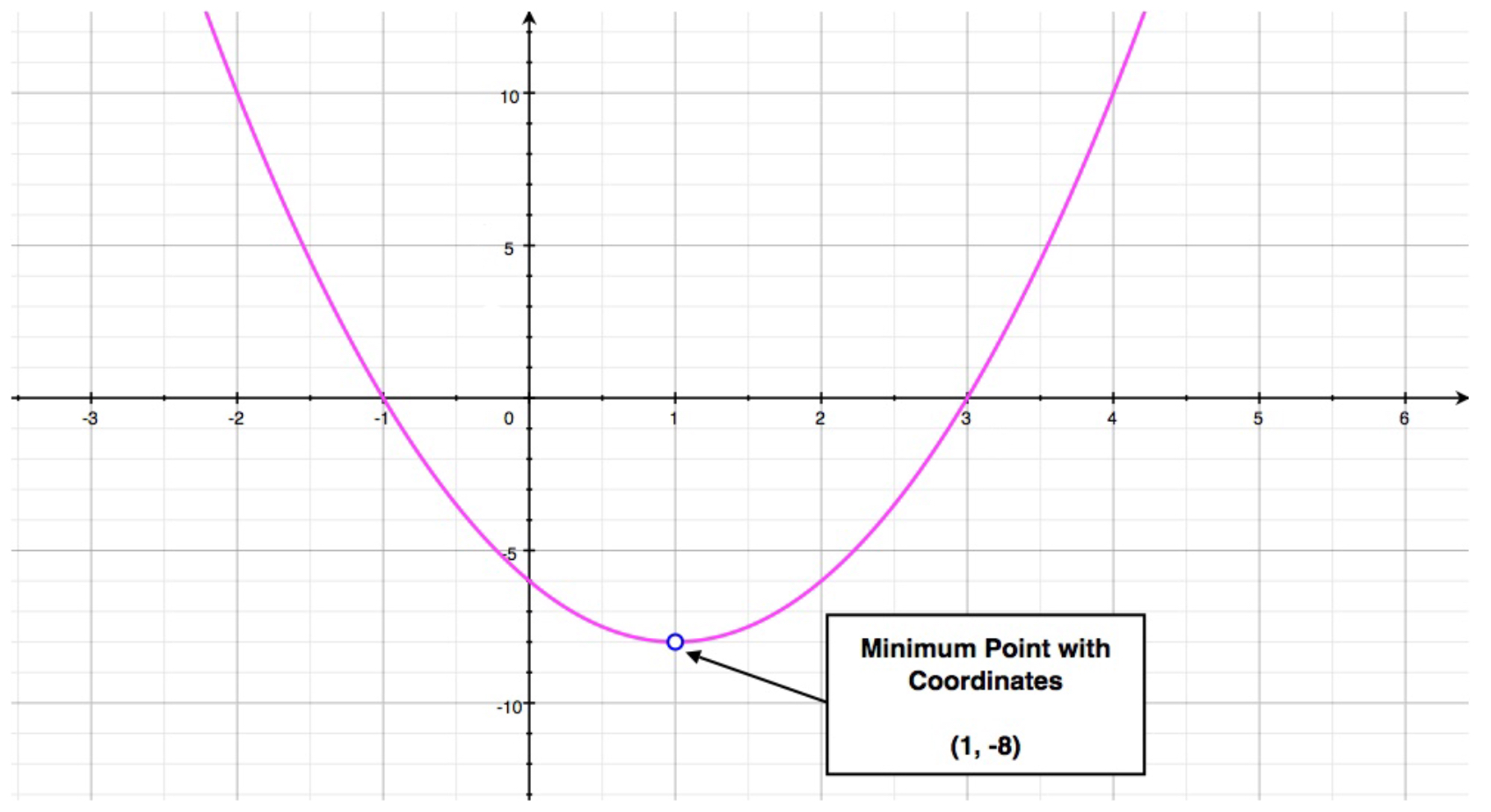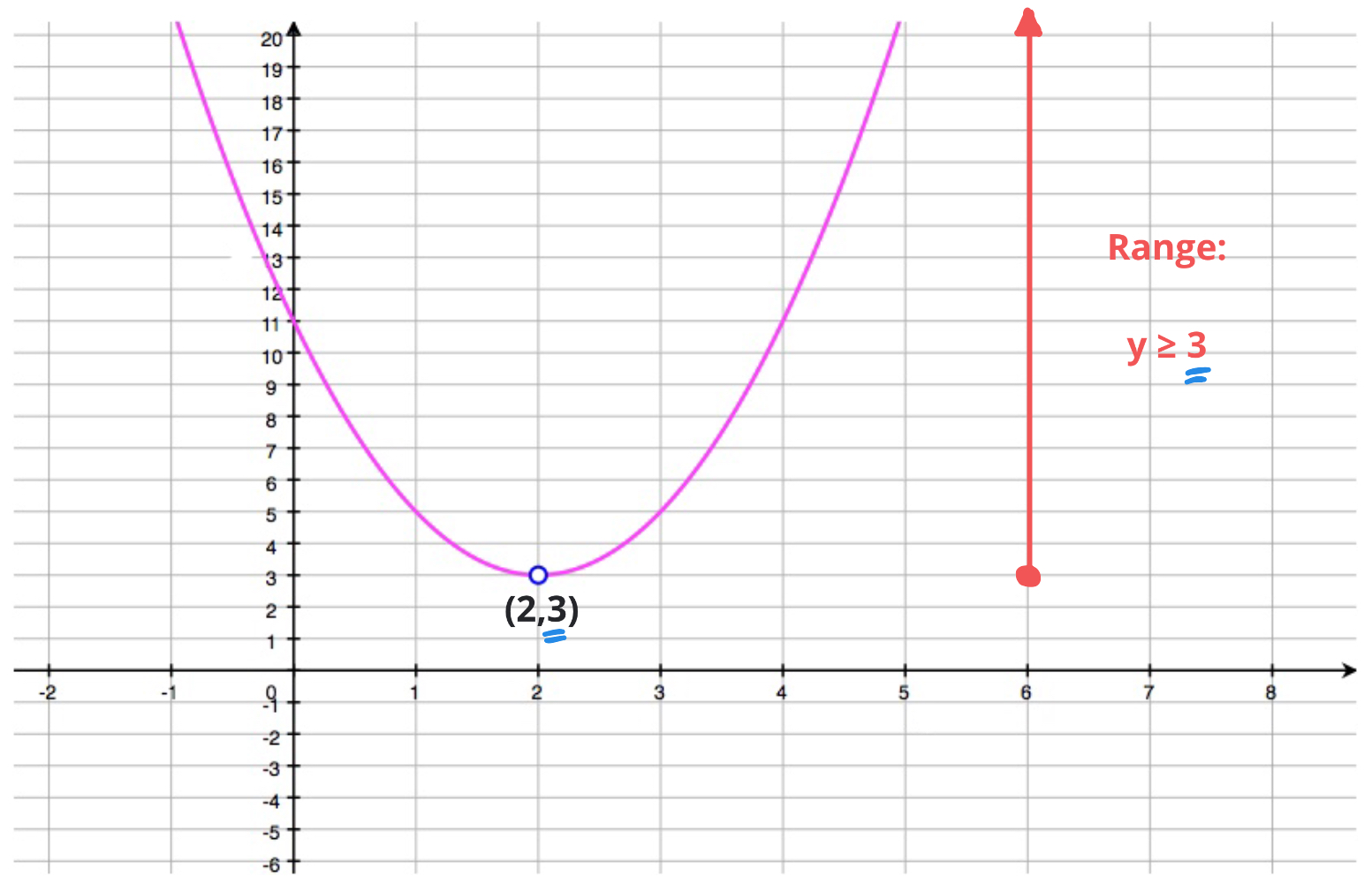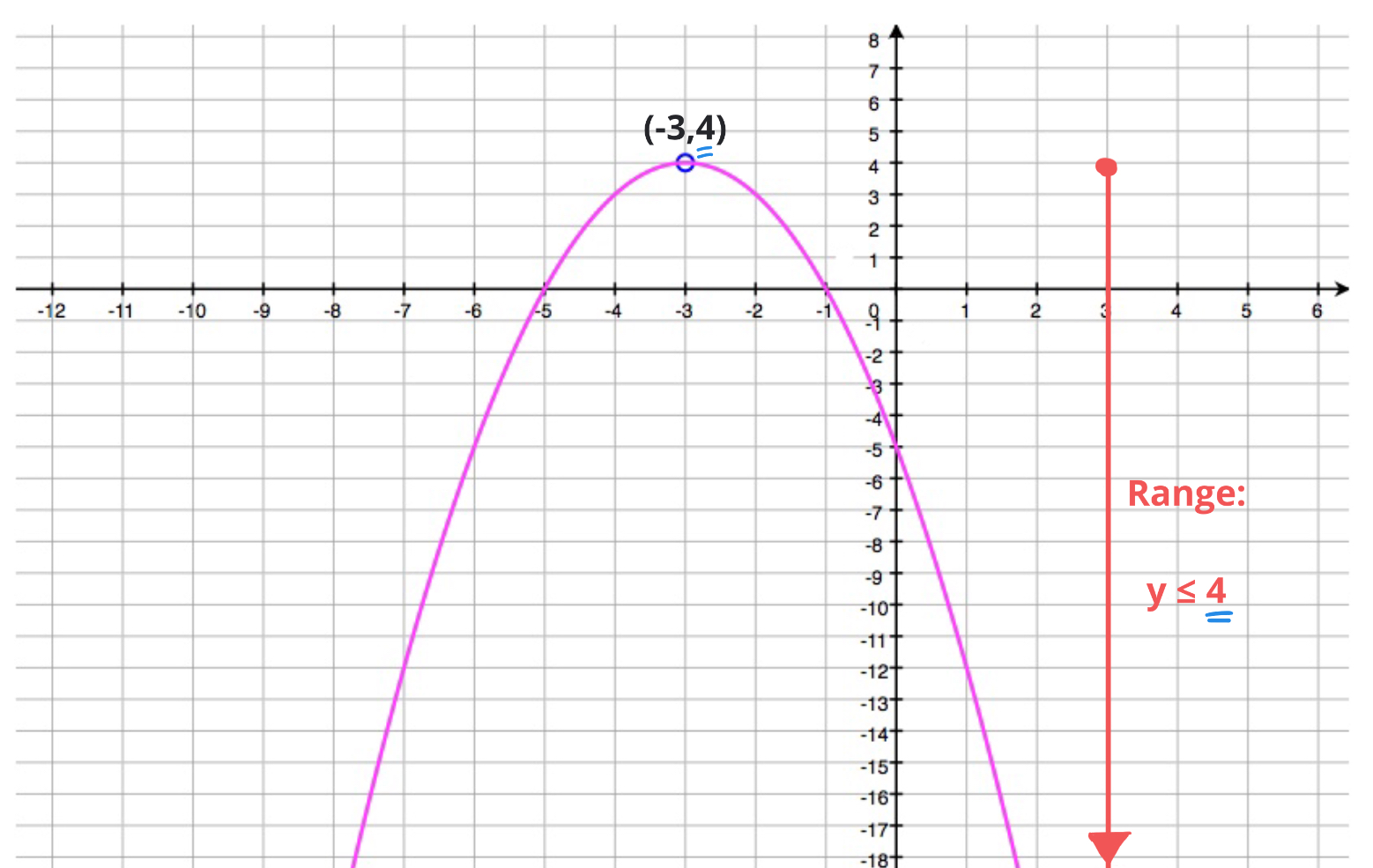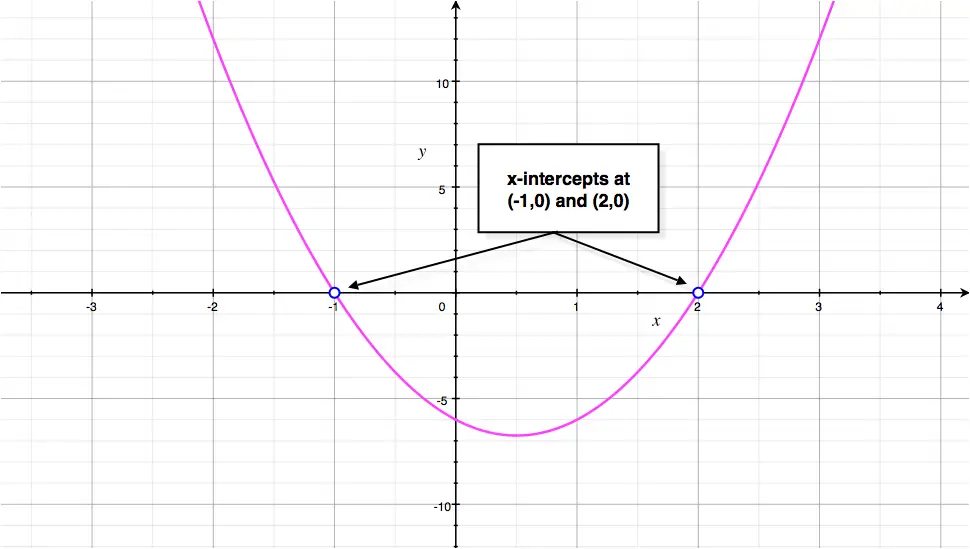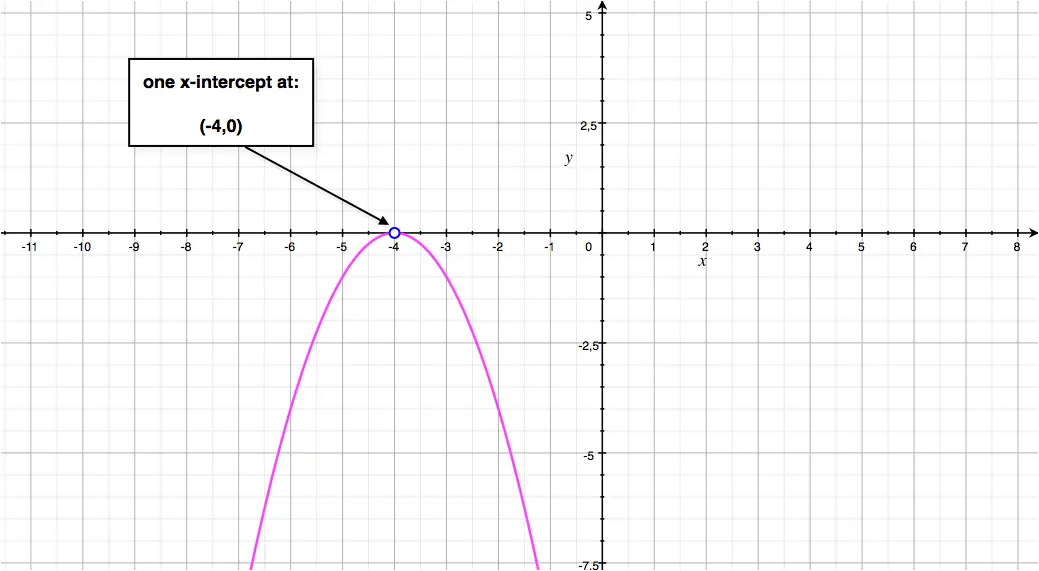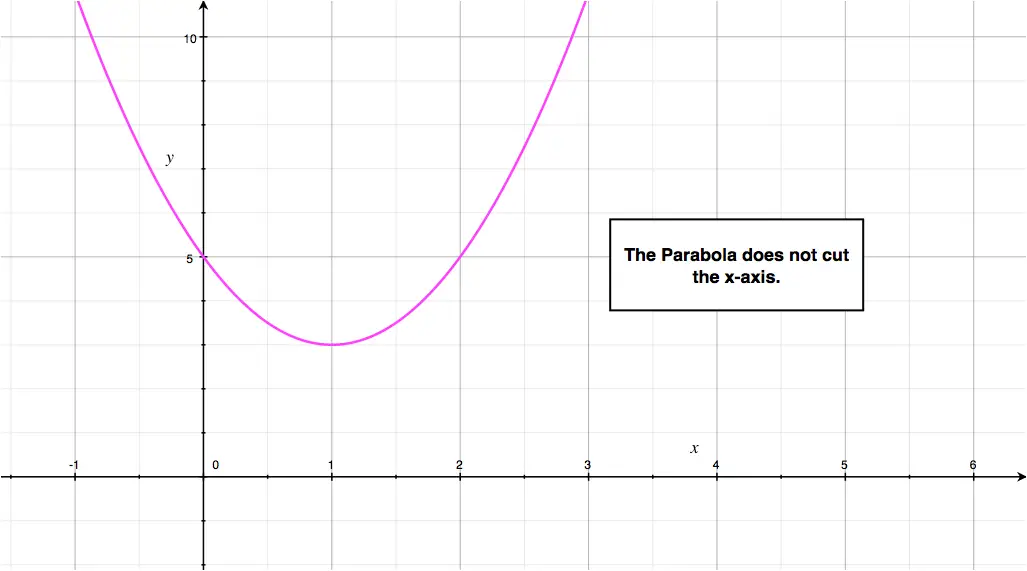Quadratic Functions & Parabola
Quadratic functions are all of the form: \[f(x) = ax^2+bx+c\] where \(a\), \(b\) and \(c\) are known as the quadratic's coefficients and are all real numbers, with \(a\neq 0\).
The Parabola
Given a quadratic function \(f(x) = ax^2+bx+c\), it is described by its curve: \[y = ax^2+bx+c\] This type of curve is known as a parabola. A typical parabola is shown here:
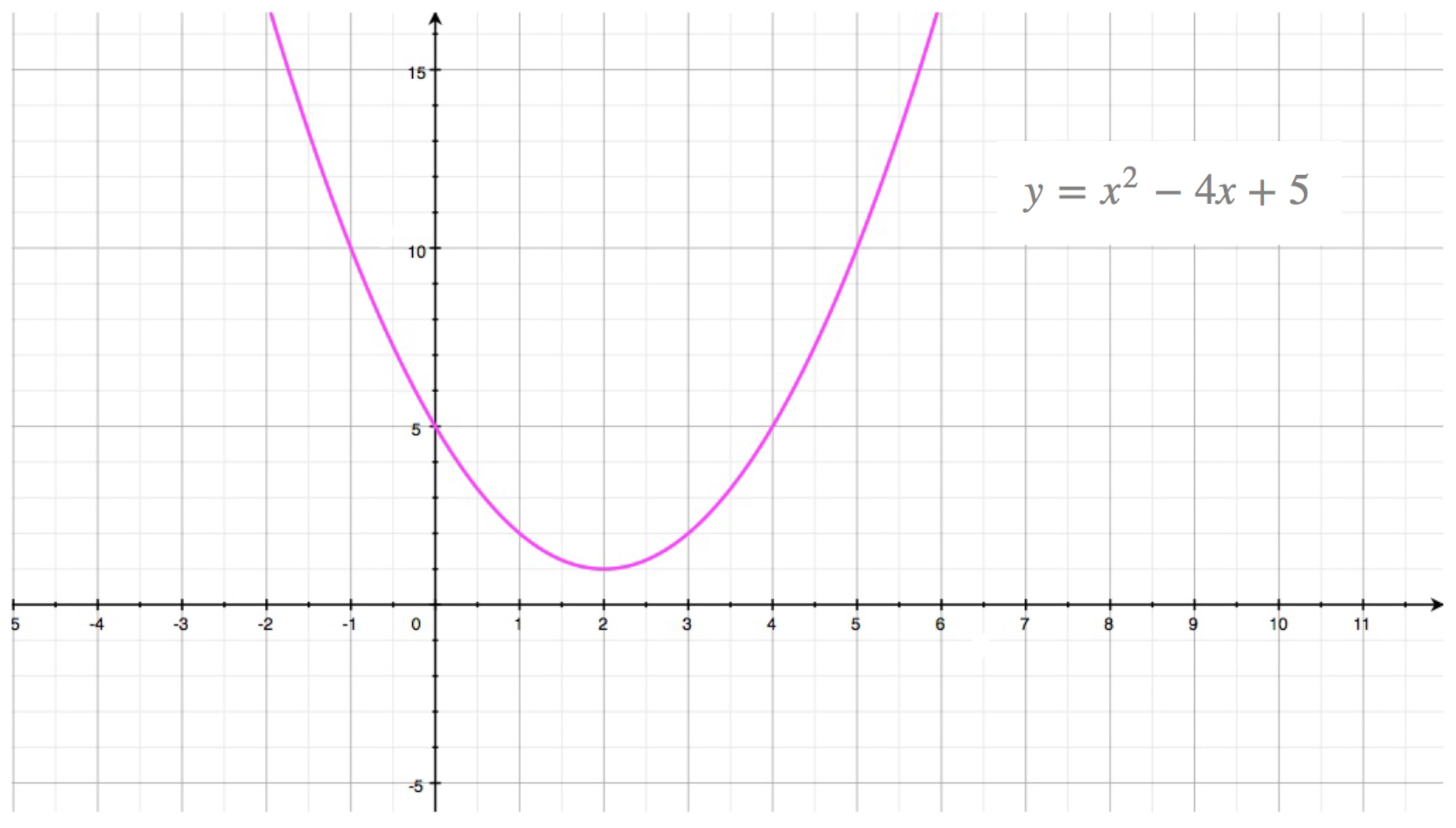
Concave-Up & Concave-Down: the Role of \(a\)
Given a parabola \(y=ax^2+bx+c\), depending on the sign of \(a\), the \(x^2\) coefficient, it will either be concave-up or concave-down:
- \(a>0\): the parabola will be concave-up
- \(a<0\): the parabola will be concave-down
We illustrate each of these two cases here:
The \(x^2\) coefficient is \(2\), which is positive.
This corresponds to the \(a>0\) scenario stated above.
The parabola is shown here:
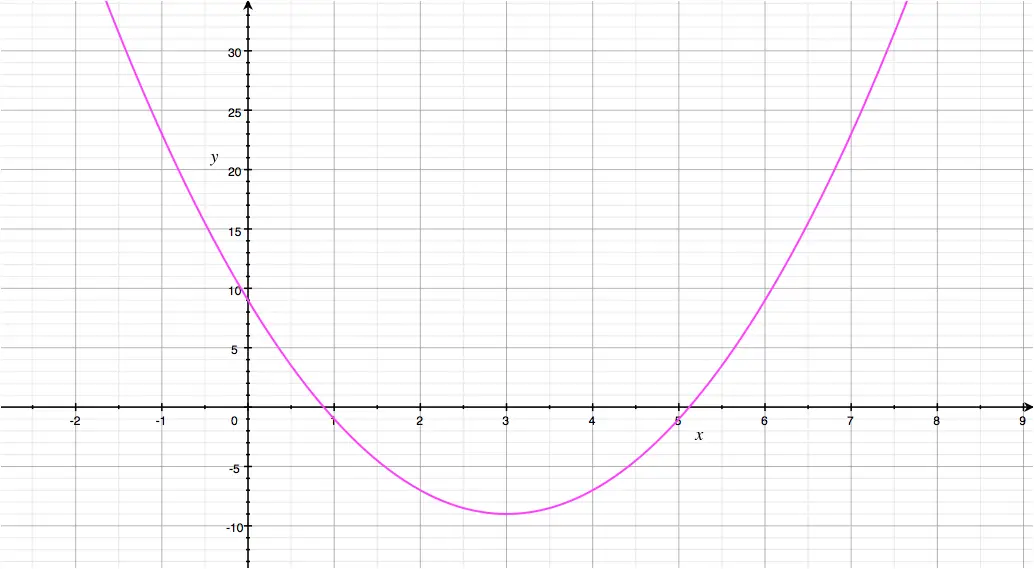
The \(x^2\) coefficient is \(-1\), which is negative.
This corresponds to the \(a< 0\) scenario stated above.
The parabola is shown here:
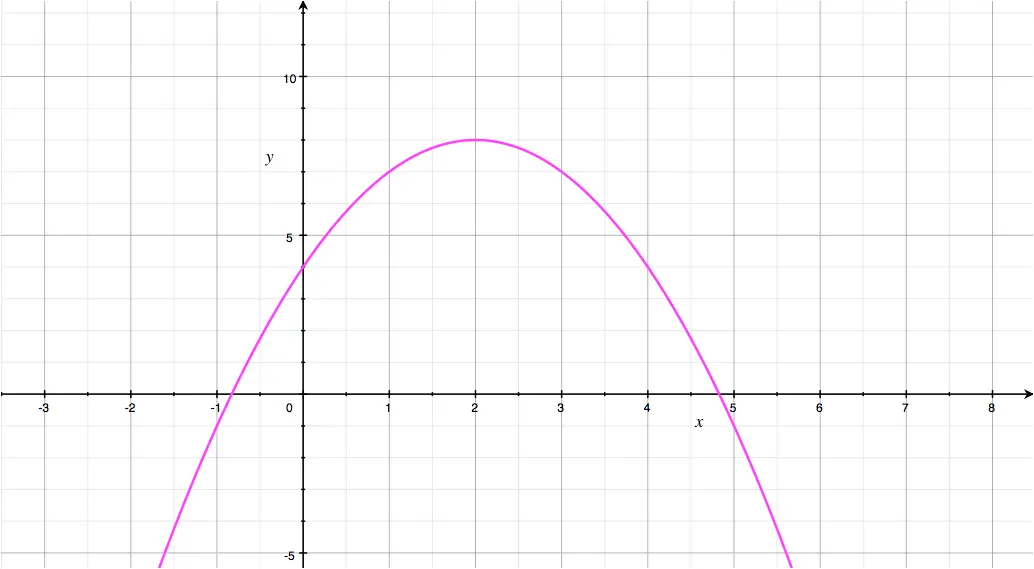
\(y\)-intercept, \(c\)
Given a parabola \(y=ax^2+bx+c\), the point at which it cuts the \(y\)-axis is known as the \(y\)-intercept.
The \(y\)-intercept will always have coordinates: \[\begin{pmatrix}0,c\end{pmatrix}\] where \(c\) is the only term in the parabola's equation without an \(x\).
Example
The parabola defined by: \[y = x^2+2x-3\] has \(y\)-intercept at: \[\begin{pmatrix}0,-3\end{pmatrix}\] Where \(-3\) is the only term without an \(x\) in the parabola's equation.
This can be seen on this parabola's graph:
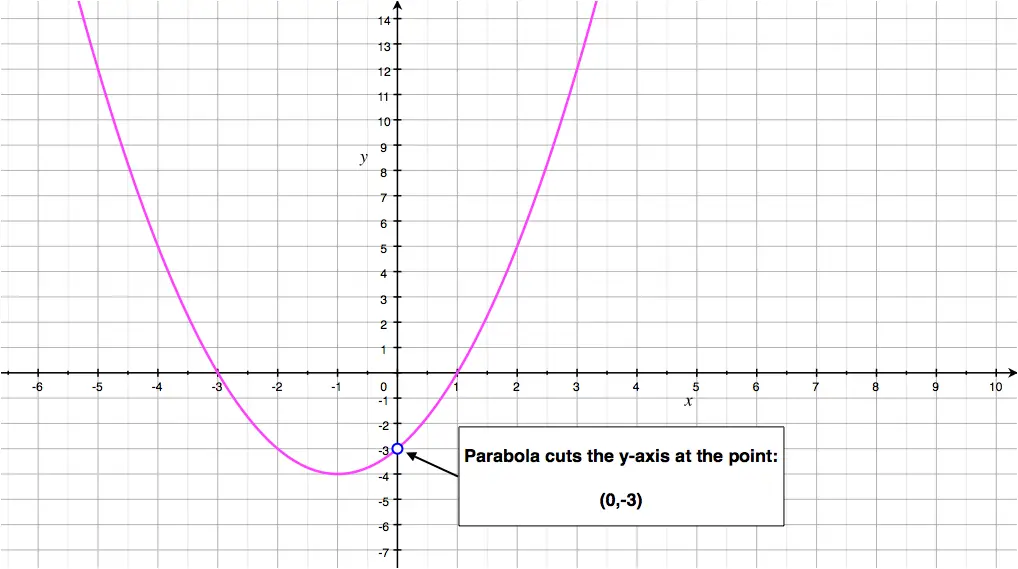
This can be confirmed algebraically we can find the \(y\)-intercept using the fact that when the curve cuts the \(y\)-axis: \(x=0\), so replacing \(x\) by \(0\) in the parabola's equation leads to: \[y = 0^2+2\times 0-3 = -3\] So the \(y\)-intercept is \(\begin{pmatrix}0,-3 \end{pmatrix}\).
Axis of Symmetry
All parabola have a vertical axis of symmetry, with equation: \[x = \frac{-b}{2a}\]
Tutorial: Axis of Symmetry
In the following tutorial we see how to use the formula for finding a parabola's axis of symmetry.
Example
The parabola defined by: \[y = x^2 - 6x+5\] has axis of symmetry: \[\begin{aligned} x & = \frac{-(-6)}{2\times 1} \\ & = \frac{6}{2} \\ x & = 3 \end{aligned}\] This parabola's vertical axis of symmetry has equation: \[x = 3\] This is illustrated in the graph we see here, where the axis of symmetry is the dotted line.
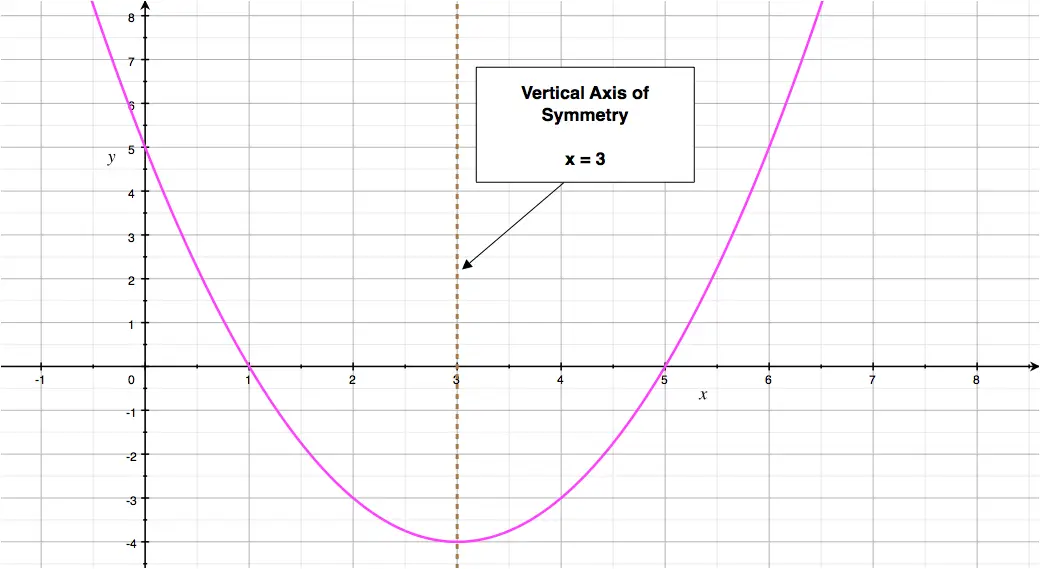
Vertex of a Parabola
Given a quadratic function \(f(x) = ax^2+bx+c\), depending on the sign of the \(x^2\) coefficient, \(a\), its parabola has either a minimum or a maximum point:
- if \(a>0\): it has a maximum point
- if \(a<0\): it has a minimum point
Finding the Vertex
To find the vertex we calculate its \(x\)-coordinate, \(h\), with the formula given below.
We then calculate its \(y\)-coordinate, \(k\), by plugging in the
- Step 1: calculate the \(x\)-coordinate of the vertex, \(h\), using the formula: \[h = \frac{-b}{2a}\]
- Step 2: calculate the \(y\)-coordinate of the vertex, \(k\), by replacing \(x\) inside \(y=ax^2+bx+c\) and calculating the value of \(y\).
Tutorial: Coordinates of the Vertex
In the following tutorial we learn how to find the coordinates of a parabola's vertex, in other words the coordinates of its maximum, or minimum, point.
Example
Consider quadratic function whose parabola is described by: \[y = 2x^2 - 4x - 6\]
- State whether this parabola's vertex is a maximum, or a minimum.
- Find the coordinates of this parabola's vertex.
Domain & Range
Domain
Given a quadratic function, \(f(x)=ax^2+bx+c\), and its parabola, \(y=ax^2+bx+c\), unless otherwise stated, the domain is:
Range
The range depends on two things:
- the sign of the coefficient \(a\).
- the \(y\)-coordinate, \(k\), of the vertex.
- if \(a>0\): the parabola's vertex is a minimum point and the range will be: \[\text{Range}: y\geq k\]
- if \(a< 0\): the parabola's vertex is a maximum point and the range will be: \[\text{Range}: y\leq k\]
Example
Find the range of each of the quadratic functions defined by:
- The parabola \(y = 2x^2 - 8x+11\)
- The parabola \(y = -x^2 - 6x - 5\)
\(x\)-intercepts
Given a quadratic function \(f(x) = ax^2+bx+c\), its parabola \(y=ax^2+bx+c\) cuts the \(x\)-axis either:
- Twice
- Once
- Not at all
Example
Find the \(x\)-intercept(s) for each of the following parabola:
- \(y = 3x^2 - 3x-6\)
- \(y = -x^2-8x-16\)
- \(y = 2x^2-4x+5\)
